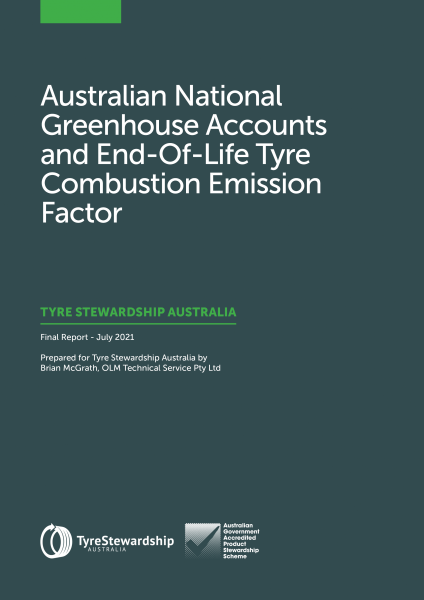End-Of-Life Tyre Combustion Emission Factors
In 2021, TSA commissioned the Australia National Greenhouse Accounts and End-of-life tyre Combustion Emission Factor report, which proposed more representative emissions factors for end-of-life tyres (EOL tyres), with the aim to better recognise and facilitate the use of tyre-derived fuel (TDF) as a fossil fuel replacement. The outcome of this investigation identified the importance of accounting for the biomass content, due to the presence of natural rubber in passenger car tyres, truck and off-the road (OTR) tyres. The results from the report proposed more accurate energy and emission factors, demonstrating that as a fossil fuel replacement, TDF has a higher calorific value than coal, and reduces greenhouse gas emissions by around 30% for the same energy input.
TSA identified that a potential barrier to uptake of TDF in local energy recovery markets was that the designated solid fuel factor for EOL tyres was not a true representation of the actual energy content and the associated greenhouse gas emissions from combustion. At the time of the report, the National Greenhouse and Energy Reporting (NGER) Scheme did not recognise tyres as a stand-alone fuel, failing to highlight one of the major incentives for EOL tyre reuse, namely as a means by which an energy-intensive business, such as cement production, can reduce its greenhouse gas emissions.
Since commissioning the report, TSA has worked closely with the Federal Government to propose a 2022 update to the NGER scheme legislation, specifically to create 2 new fuel types for EOL tyre, allowing NGER reports to reflect emissions more accurately from TDF combustion. The updated amendments can be found here.
Frequently Asked Questions
TDF is produced from tyres through shredding, generally to a range of around 50 – 150 mm.
Tyres can be added as a solid fuel to replace fossils fuels, for combustion in cement kilns, boilers, furnaces, and pulp and paper mills if the appropriate processing and feed systems are in place. Since conducting this emission factors research, TSA has supported tyre recyclers and the cement industry by providing additional technical information about EOLT, to support TDF use in Australian cement kilns.
The use of TDF as a solid fuel in cement kilns is a relatively common practice internationally and has occurred in Australia in the past, however at the time of this report, no Australian kilns or mills were utilising TDF. A large proportion of Australia’s EOLT are currently exported, a significant percentage of which is assumed to be used as TDF in kilns around the world.
For passenger car tyres the new designated energy content factor is 32 GJ/t and the new CO2 emission factor is 62.8 kgCO2-e/GJ
For truck and off-the road tyres the new designated energy content factor is 27.1 GJ/t and the new CO2 emission factor is 55.9 kgCO2-e/GJ
The changes in legislation came into force on 1st July 2022.
